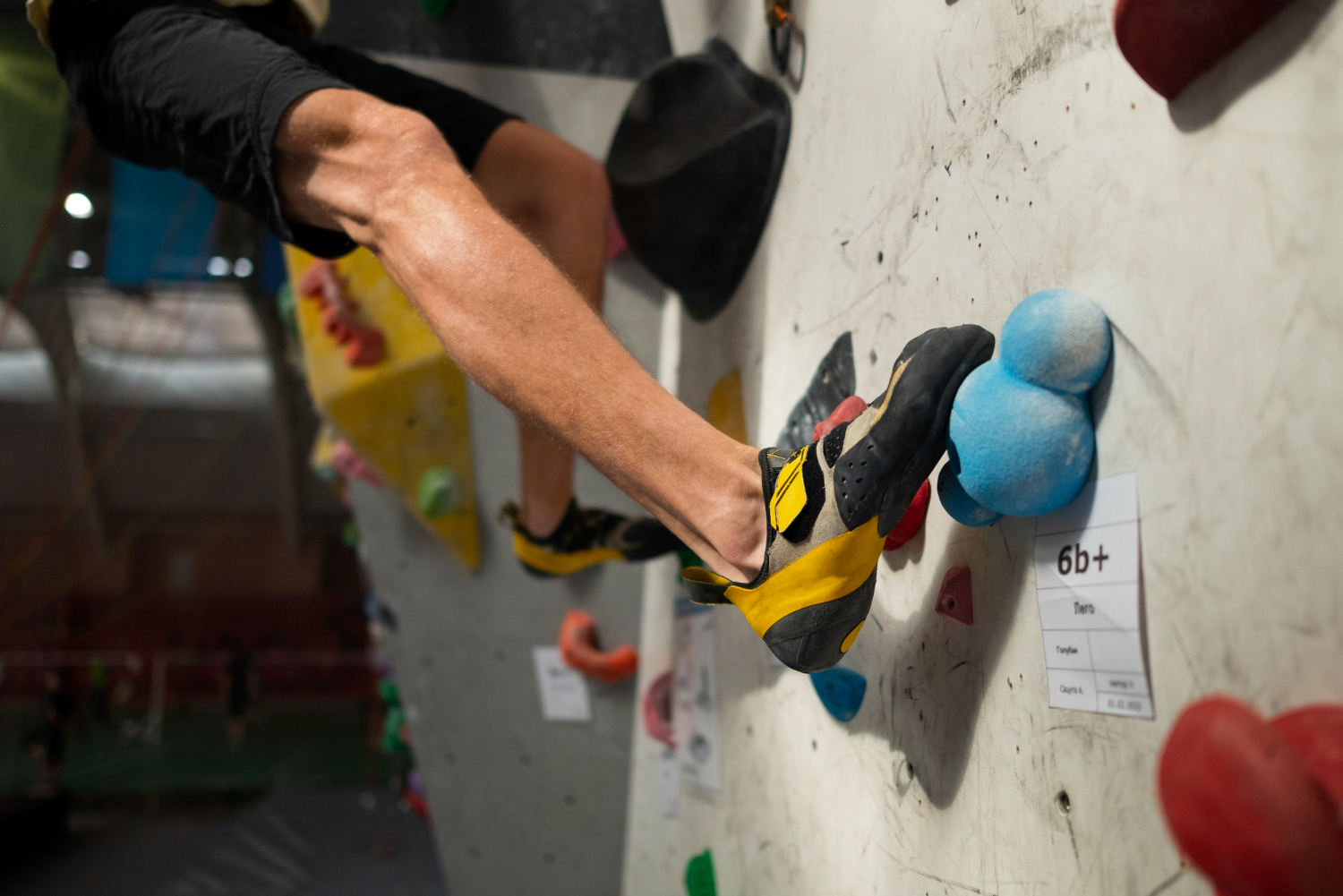The thrill of conquering a boulder, the joy of a perfect climb, and the adrenaline rush — these features make bouldering such an addictive sport. Mastering various techniques is crucial whether you are new to bouldering or looking to level up your game.
This article will delve into several bouldering techniques that will make you more proficient and add finesse to your climbing style.
Footwork: The foundation of bouldering
Footwork is the unsung hero of bouldering. While upper body strength often gets the spotlight, your feet give you stability, control, and balance on the boulder. Good footwork allows you to distribute your weight evenly and makes for more energy-efficient climbing.
One important footwork trick is called edging. It is when you use the side of your climbing shoe to stand in small places to put your feet. This skill is beneficial on overhangs or vertical walls.
Another essential footwork technique is smearing, where you use the rubbery sole of your shoe to grip the wall when no footholds are available.
Hand techniques: Grip and hold
How you grip and hold can determine the success or failure of your climb. The crimper is a commonly used grip technique that engages your fingertips on the holds and uses your thumb for extra force. It is excellent for less positive holds but can be strenuous on the fingers.
Pinching is another technique for holds that are not inward-facing. Here, you use your thumb and fingers to pinch the hold, employing your thumb’s opposing force to maintain grip. Knowing when to use which grip can be crucial, especially in more complex routes.
Body positioning: The art of balance
Understanding how to position your body can significantly improve your climbing efficiency. Techniques like flagging can help you stay balanced when reaching for distant holds. Similarly, twisting allows you to rotate your hips and shoulders toward your next move. It provides you with the necessary reach and balance.
Body positioning also involves knowing when to be static or dynamic. Static moves are slow and controlled, allowing you to conserve energy. On the other hand, dynamic moves are fast and explosive, often necessary for covering more considerable distances between holds.
Route reading: The mental aspect of bouldering
Before you start climbing, take a moment to study the boulder and plan your route. People know it as route reading, an often-overlooked aspect of bouldering. By identifying the crux or the most challenging part of the climb, you can conserve energy for those crucial moments. Understanding the placement of holds and possible sequences can significantly enhance your climbing efficiency.
Visualization plays a significant role in route reading. Imagine successfully manoeuvring through each move, and you will often find that the physical act follows suit.
Conclusion
To summarise, bouldering is as much about technique as it is about strength. The more you understand these techniques, the more refined your climbing will be. Remember that consistent practice and some falls are the best way to improve your bouldering. After all, each fall is a lesson in itself. So, chalk up, climb on, and conquer that boulder!
If you need further assistance, please contact us for more guidance and tips. We are here to help you improve your bouldering skills.
